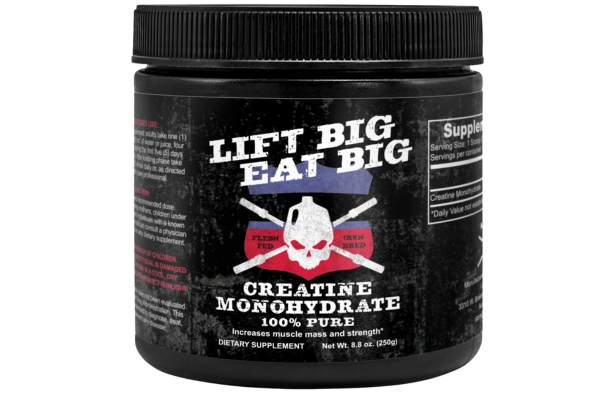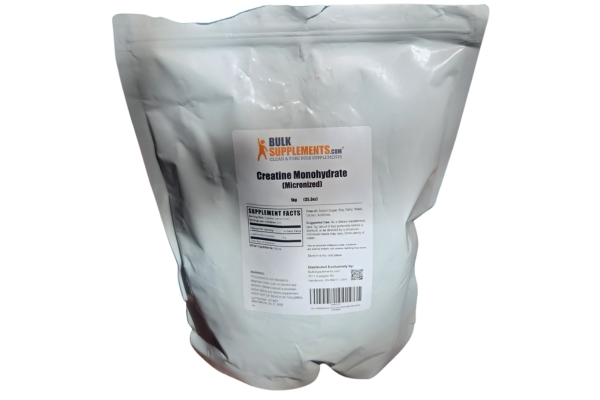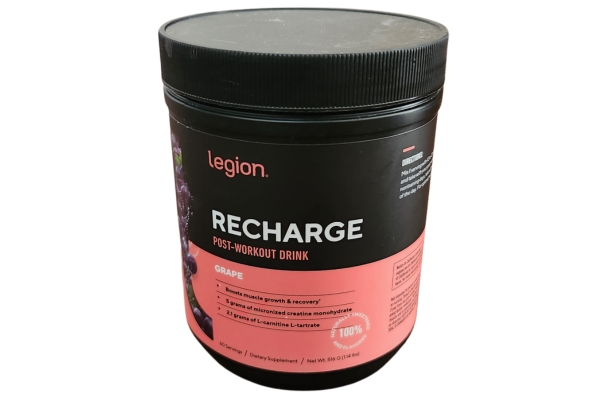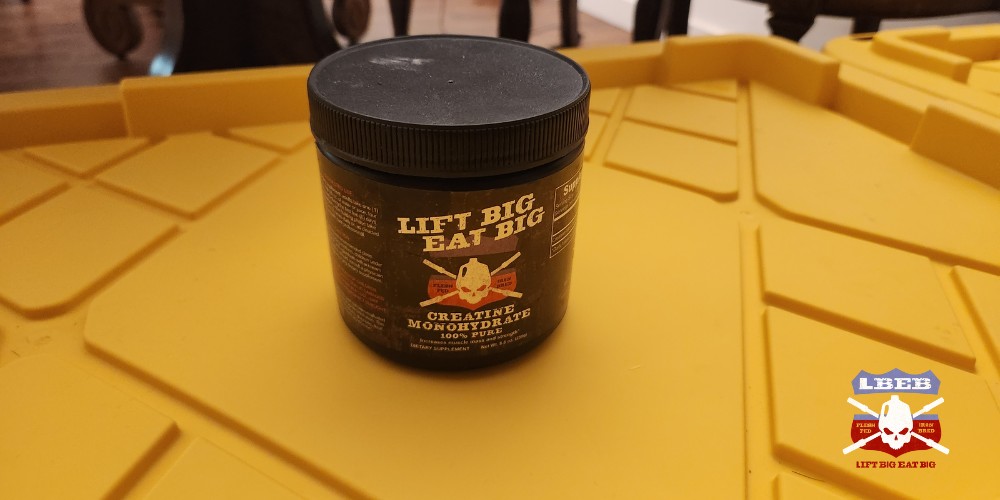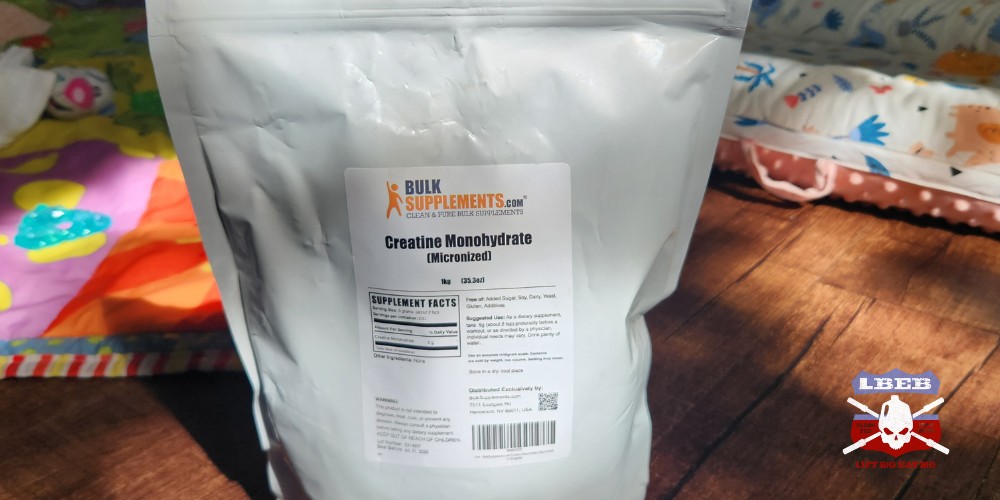Let me preface this article by saying creatine is safe for teens and is a well-researched sports supplement to aid their training. Many myths and stories come from outdated perceptions and tainted creatine supplements.
It's why when choosing a creatine for your teen (or as a teen), you must find reputable brands with third-party testing so you know it's not contaminated with harmful substances. So, here's the best creatine for teens that fit the criteria.
Header | Best Creatine For Teens | Best Budget Creatine For Teens | Best Flavored Creatine For Teens |
|---|---|---|---|
Product | |||
Size | 250 g | 100 g - 5 kg | 534 g |
# of Servings | 50 | 20 - 1000 | 60 |
Creatine per Serving | 5 g | 5 g | 5 g |
Price |
Table of Contents
Best Creatine For Teens
Lift Big Eat Big 100% Pure Creapure® Creatine Monohydrate
When picking a creatine supplement for teens, focus on what is in it and that it has no contaminants. That’s the idea behind the Lift Big Eat Big Creatine Monohydrate.
It's an excellent choice for teens because we ensure you know exactly what you're getting. We provide a Certificate of Analysis (CoA) to show that our creatine is pure and clean.
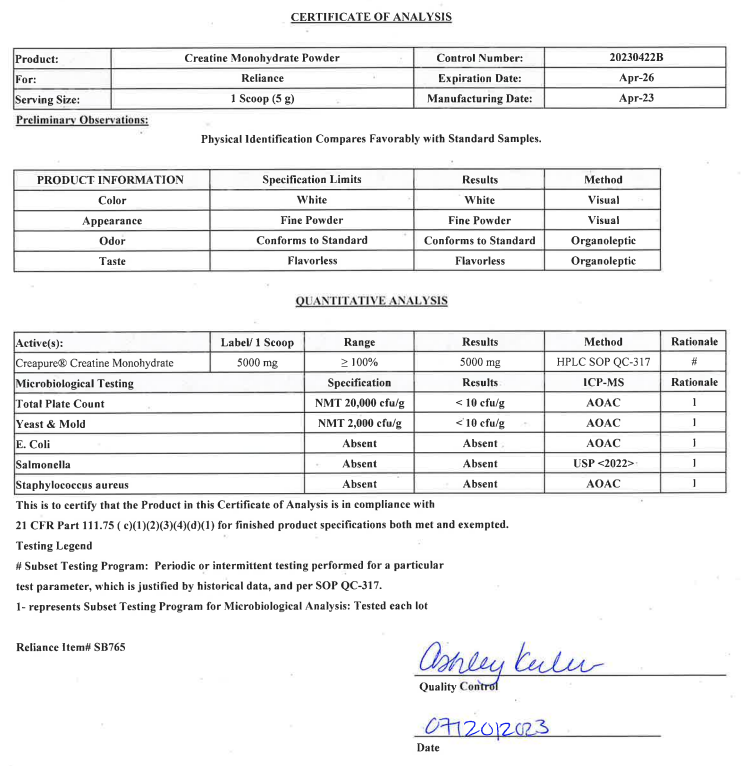
Our product is pure creatine monohydrate, specifically from Creapure®, known for being 99.9% pure [1][2]. That’s why it’s the best out there – our CoA backs this up.
It’s designed to support strength, power, and muscle growth by helping replenish your muscles' primary energy source, ATP.
This makes it suitable not only for bodybuilders but for any sport that demands quick, explosive movements, like soccer, basketball, and track events.
Be careful with low-cost creatine you might find online. There’s a chance they could have impurities or substances you don’t want, and few are thoroughly checked. For example, only 8% of creatine supplements on Amazon are tested for impurities [3].
Lift Big Eat Big doesn’t add any fillers or flavors. It’s just straight-up, high-quality, flavorless creatine monohydrate.
For the price, our single tub with 50 servings is $39.99, coming to $0.80 per serving. But if you go for the bundle of three tubs, you get 150 servings for $99, with free shipping in the US, which works out to only $0.66 for each serving.
Pros
Cons
Best Budget Creatine For Teens
Bulk Supplements Creatine Monohydrate
If you’re on a tight budget, especially as a student, Bulk Supplements is an intelligent choice. They are an NSF-certified company that used to sell to businesses but now sells directly to customers.
They offer creatine in various sizes, from small 100 g pouches to larger quantities that could last through any emergency. The creatine is almost unflavored but has a slight bitter aftertaste if taken on its own.
Their creatine monohydrate is budget-friendly, especially in bulk. You can get a three-year supply for $145, and that's for a 5 kg bag, which has 1000 servings of 5 g each.
Just note that the bag may not reseal well over time, so you should transfer the creatine to another container to keep it fresh.
Pros
Cons
Best Flavored Creatine For Teens
Legion Recharge Post-Workout
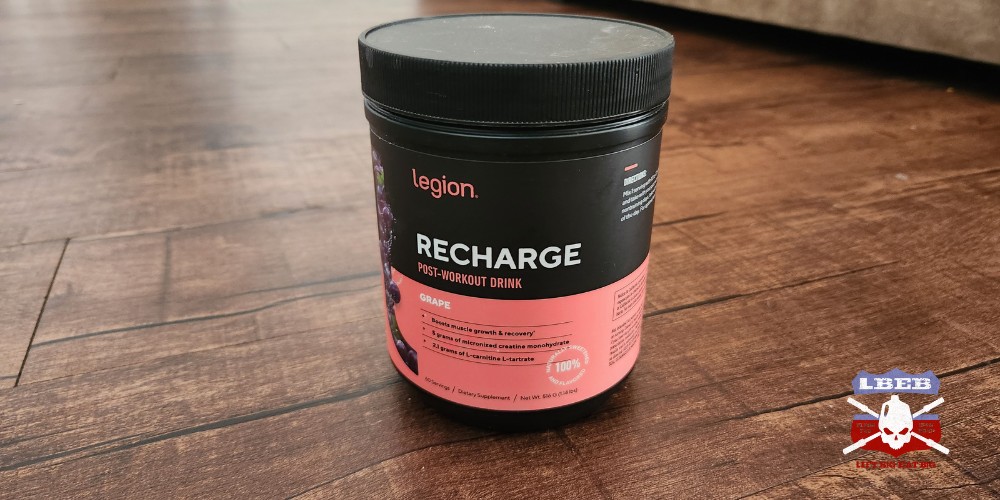
For those who prefer mixing creatine on its own, flavored creatine is more enjoyable, similar to sipping on a fruity drink.
Legion Recharge is a solid choice for flavored creatine monohydrate verified for purity and made in the U.S. in facilities that meet strict quality standards.
This supplement skips artificial flavors and sweeteners, opting for natural ones like stevia. It includes L-carnitine, which may help lessen muscle soreness post-exercise [4].
You can pick from fun flavors like sour candy, strawberry lemonade, fruit punch, and watermelon. If you like tangy flavors, sour candy might be a refreshing change to keep you hydrated and happy.
Pros
Cons
Best Informed-Sport Creatine For Teens
Bare Performance Nutrition Creatine Creapure Formula
Look for products with a third-party testing seal like Informed Sport, which means it's been checked for illegal substances.
Bare Performance Nutrition's Creapure Creatine is a reliable choice. It's made with Creapure®, a high-purity creatine monohydrate, ensuring that what you're getting is 99.9% creatine without any unwanted additives.
This creatine is unflavored and mixes well with any drink, making it versatile. Every batch is rigorously tested for banned substances, ensuring you don’t return a positive drug test.
Pros
Cons
Is Creatine Safe For Teens?
Registered dietician Hanli Etsebeth, a Ph.D. candidate studying adolescent athlete nutrition, states “creatine is considered safe for teenagers” and “creatine has been effectively and safely used from infancy and throughout a wide range of ages under 18 years old.”
Creatine is safe for teenagers and can support their training and competitive sports alongside a healthy and balanced diet [6].
How To Pick The Best Creatine For Teens
Purity
Purity should be the number one priority when buying creatine for teens. Creapure®, known for being 99.9% pure creatine monohydrate, is widely regarded as the gold standard. When shopping for creatine, try to find products that contain Creapure® to ensure high quality.
Choose a creatine that has been thoroughly tested for purity and effectiveness.
A brand that provides a Certificate of Analysis (CoA) is ideal because it shows the product has been independently verified for purity. Many supplements may not offer this level of transparency, especially those found on marketplaces like Amazon.
Type
The only creatine you should consider is creatine monohydrate. As quoted in Science Direct, “all alternative forms of creatine [monohydrate] found in this investigation utilize marketing hyperbole to sell their products” [3].
Here's a list of the different types of creatine companies will try to sell you:
Unfortunately, none have the evidence supporting them like creatine monohydrate does, which maximally saturates the muscle [1].
Of these, 7 have no evidence to support bioavailability, efficacy, and safety, and another 7 have limited evidence.
The last two are creatine HCL and creatine anhydrous, which likely act similarly to creatine monohydrate.
Powder vs. Capsules vs. Gummies
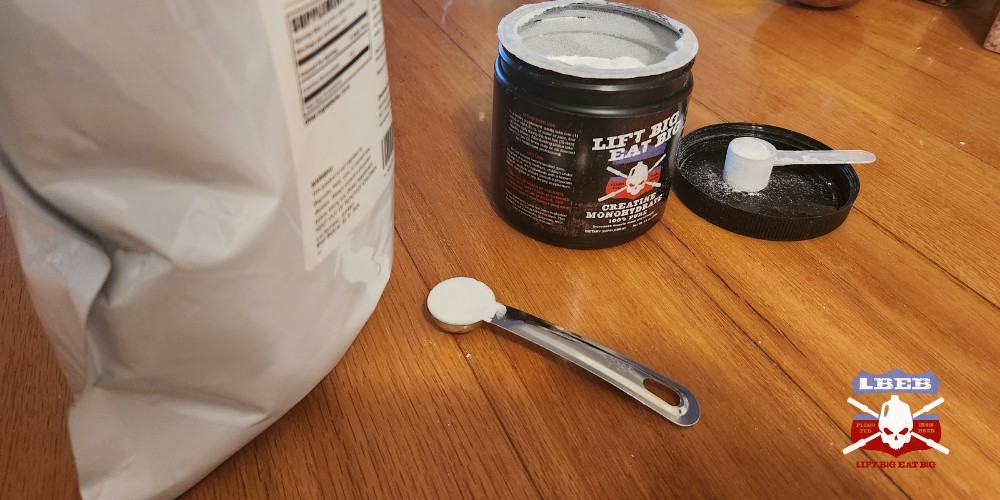
For active teens who are always on the move, creatine capsules might seem convenient for their portability. However, for everyday use, there are better choices.
You'd need to consume a lot of capsules to reach the recommended daily dose of 3 to 5 grams. Plus, capsules can be more expensive and often only provide less than a month's supply.
On the other hand, creatine powder is more cost-effective. You can get a larger amount for a lower price, and one pouch can last for several months. It's more practical for regular use and easier on your wallet in the long run.
Creatine gummies are the new wave of creatine delivery but are similar to capsules except worse, in my opinion.
There are creatine gummy products that add 14 g of sugar with your 5 g of creatine. And you’re paying the same price for a bottle that lasts 30 days as you would with powder that lasts 50 – 100 days. Stick with powder.
Price
If you're shopping for creatine, keep it simple and smart. Creatine monohydrate is not only effective but also friendly to your budget.
Some companies try to sell other types of creatine at more than twice the price of monohydrate, claiming they're better [3]. This is often just a marketing strategy to make more money.
Stick with high-quality creatine monohydrate; it gives you the best bang for your buck.
But watch out for prices that seem too low—they might be a red flag for poor quality. Balance is key: look for a product that's affordable but still comes from a reputable source.
How To Take Creatine For Teens
When using creatine as a teen, there are two main approaches: loading and non-loading. Your choice depends on how quickly you need to see results.
With the loading method, you take 20 grams of creatine daily for the first 6 days, dividing it into smaller doses throughout the day for better digestion.
After the loading phase, you continue with a daily maintenance dose of 2-5 grams to keep the creatine levels in your muscles high [5].
If you're not in a hurry, the non-loading method may be more comfortable. Simply take 3-5 grams of creatine daily.
It will take longer, about a month, to fully saturate your muscles with creatine, but it's a steady and easy routine to follow [5].
Unless you need quick performance enhancement, the non-loading way is usually the better option to incorporate into your daily routine.
Frequently Asked Creatine For Teens Questions
Can My 14-Year-Old Take Creatine?
Your 14-year-old can take creatine, and it has been shown to be safe for all ages. The reason creatine has been demonized for younger age groups is the warning messages on supplement labels for legal reasons.
Further, people often lump creatine with anabolic steroids, which are two completely different compounds.
Regardless, teens are getting creatine through the meat they eat daily. It's insufficient to maximally saturate the muscle, hence supplementing with powder.
Should You Take Creatine Under 18?
Whether you take creatine under 18 depends on your training and athletic goals. If you want to increase strength, muscle size, strength endurance, and power output and potentially see cognitive benefits, then you should be taking creatine.
If you're a weekend warrior or learning to hit the gym, taking creatine or any supplement is much lower down your list of priorities.
That doesn't mean not taking creatine. But there are more important facets to learn and develop before spending time and money dialing in a supplement routine.
Is Creatine Legal?
Creatine is legal and is not a banned substance within sport under the WADA guidelines. It is not a banned substance under any state or federal law either, as it aligns with The Dietary Supplement Health and Education Act of 1994 (“DSHEA”).
Summary
There is nothing wrong with teens taking creatine unless the creatine supplement is poor quality and tainted with other banned substances. Therefore, opt for trusted brands with CoAs that show their third-party testing data, like Lift Big Eat Big.
References
- Kreider, R. B., Jäger, R., & Purpura, M. (2022). Bioavailability, efficacy, safety, and regulatory status of creatine and related compounds: A critical review. Nutrients, 14(5), 1035.
- Jäger, R., Purpura, M., Shao, A., Inoue, T., & Kreider, R. B. (2011). Analysis of the efficacy, safety, and regulatory status of novel forms of creatine. Amino acids, 40, 1369-1383.
- Escalante, G., Gonzalez, A. M., St Mart, D., Torres, M., Echols, J., Islas, M., & Schoenfeld, B. J. (2022). Analysis of the efficacy, safety, and cost of alternative forms of creatine available for purchase on Amazon. com: are label claims supported by science?. Heliyon, 8(12).
- Yarizadh, H., Shab-Bidar, S., Zamani, B., Vanani, A. N., Baharlooi, H., & Djafarian, K. (2020). The effect of l-carnitine supplementation on exercise-induced muscle damage: a systematic review and meta-analysis of randomized clinical trials. Journal of the American College of Nutrition, 39(5), 457-468.
- Hultman, E., Soderlund, K., Timmons, J. A., Cederblad, G., & Greenhaff, P. L. (1996). Muscle creatine loading in men. Journal of applied physiology, 81(1), 232-237.
- Jagim, A. R., Stecker, R. A., Harty, P. S., Erickson, J. L., & Kerksick, C. M. (2018). Safety of creatine supplementation in active adolescents and youth: a brief review. Frontiers in nutrition, 5, 115.

